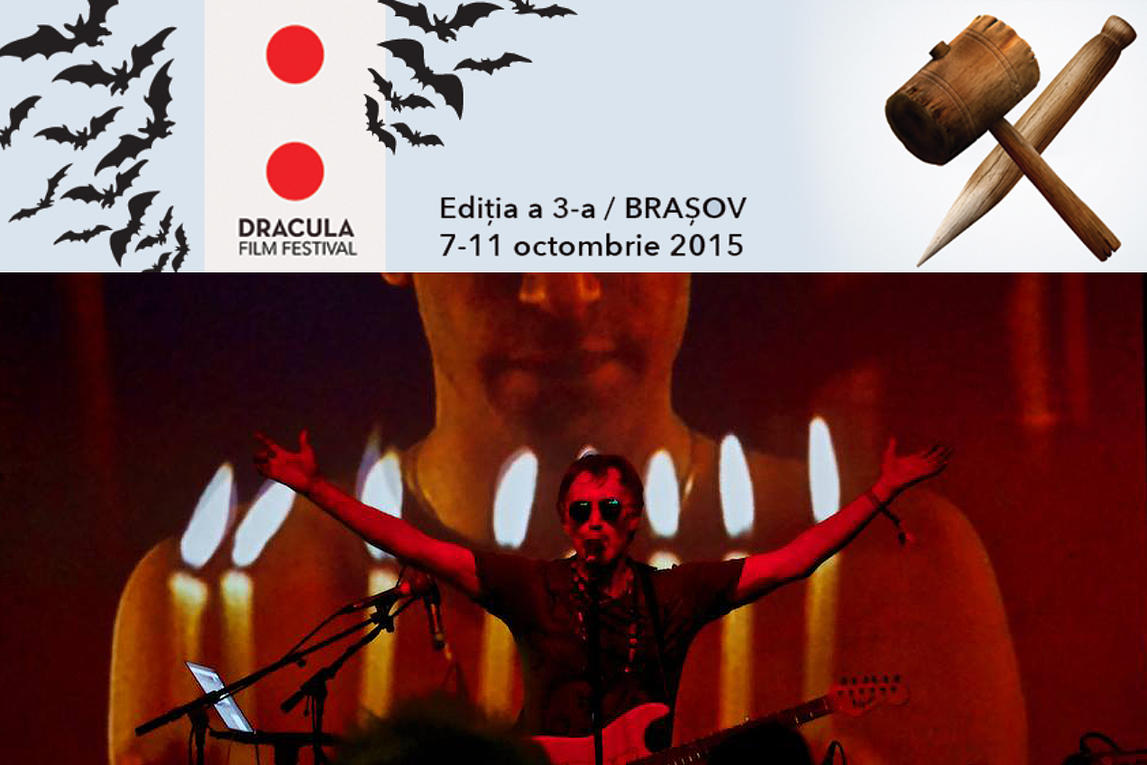Interview by Randall D. Larson
October, 2015
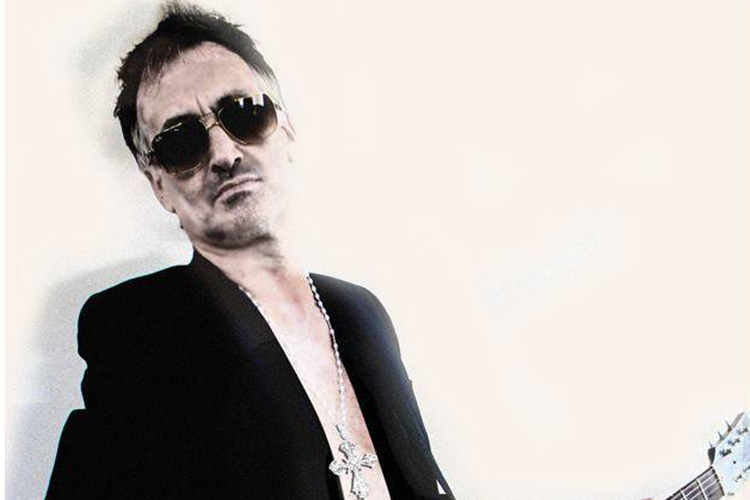 Film composer Simon Boswell has scored soundtracks for some of independent cinema’s most expressive mavericks such as Alejandro Jodorowsky (SANTA SANGRE), Danny Boyle (SHALLOW GRAVE), Clive Barker (LORD OF ILLUSIONS), Richard Stanley (HARDWARE) and Iain Softley (HACKERS), as well as significant Italian horror directors such as Dario Argento (PHENOMENA), Lamberto Bava (DEMONS 2, DELIRIUM), and Michele Soavi (STAGE FRIGHT). I first interviewed Simon in 2009, focusing on his most popular horror and science fiction scores; that interview was published in my Soundtrax column and can be read here. In the interview that follows, conducted by phone on Oct.5, 2015, we discuss some of his more recent genre scores as well as some of the scores we didn’t have a chance to talk about in our first conversation.
Film composer Simon Boswell has scored soundtracks for some of independent cinema’s most expressive mavericks such as Alejandro Jodorowsky (SANTA SANGRE), Danny Boyle (SHALLOW GRAVE), Clive Barker (LORD OF ILLUSIONS), Richard Stanley (HARDWARE) and Iain Softley (HACKERS), as well as significant Italian horror directors such as Dario Argento (PHENOMENA), Lamberto Bava (DEMONS 2, DELIRIUM), and Michele Soavi (STAGE FRIGHT). I first interviewed Simon in 2009, focusing on his most popular horror and science fiction scores; that interview was published in my Soundtrax column and can be read here. In the interview that follows, conducted by phone on Oct.5, 2015, we discuss some of his more recent genre scores as well as some of the scores we didn’t have a chance to talk about in our first conversation.
Q: Your song “Imagination” was used in the “S is for Speed” segment of THE ABC’S OF DEATH; director Jake West indicated he used it because he’s a fan of yours and your work for Jodorowsky and Argento. Did you compose or license any other music for this film, and how do you think “Imagination” works in this new context within West’s the film?
Simon Boswell: It’s the only segment of ABC’s OF DEATH that has my music. In fact, I got to meet Jake in London, and I’m very good friends with him. I’m one of the producers on his segment, and I helped him get it all together. That song has a funny history. I wrote it for the opening titles in the Lamberto Bava film GRAVEYARD DISTURBANCE (Una notte al cimitero), and after I wrote it all kinds of other movies began to ask me if I had a rock song we can put on a radio or that can be playing in a club in the background? So I decided to see if I can make it be in a record number of movies without ever having been released as a proper record! So it’s in Soavi’s THE CHURCH, it’s in LORD OF ILLUSIONS, SECOND BEST, and several other things. In “S if for Speed” there’s this girl in a car just driving through the desert in California, and we thought, you know, it kind of works on that level, so we used it as a kind of anthem.
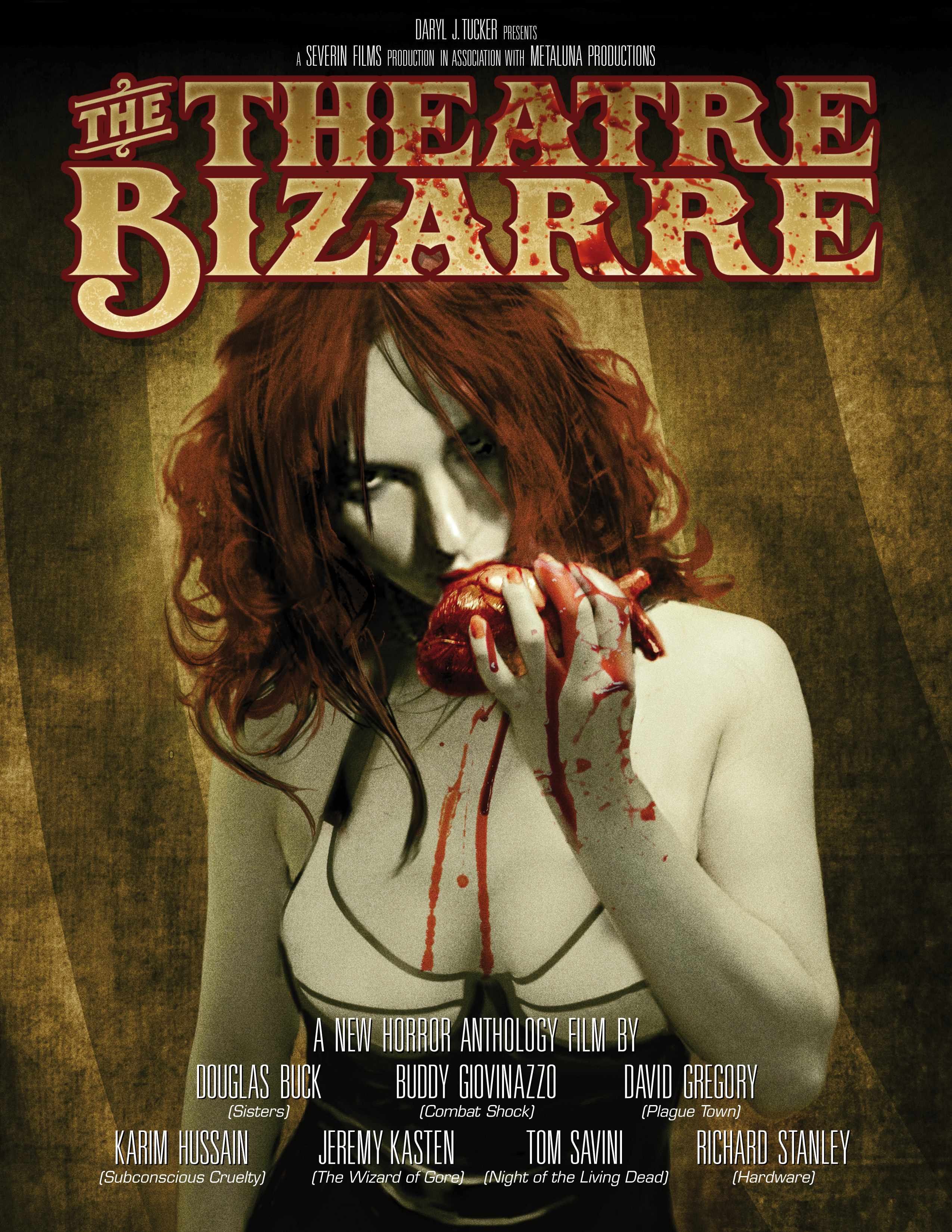 Q: Another anthology film you scored recently was THE THEATRE BIZARRE; you scored Richard Stanley’s segment “The Mother of Toads.” How would you describe this music, the episode’s needs, and working with Stanley again?
Q: Another anthology film you scored recently was THE THEATRE BIZARRE; you scored Richard Stanley’s segment “The Mother of Toads.” How would you describe this music, the episode’s needs, and working with Stanley again?
Simon Boswell: It was lovely to work with Richard. It wasn’t quite the best project for him but it began to get him back in the saddle, as it were, which is something which is also progressing at this moment in time – it’s looking like he’s going to be directing another film based on the Lovecraft story, “The Colour Out of Space.” But regarding “The Mother of Toads” it’s a very kind of gothic and almost period French piece, which is where Richard’s been living for the last couple of years – in the midst of nowhere in France. I just thought I would do something that would have a slightly spooky nature to it. It was a pretty difficult piece to write; it was neither one thing nor another. It’s not really a horror segment and it’s not particularly scary; it’s more fantastical, really, and becomes a fantasy thing. I also wrote music for another segment in that film, for Karim Hussain’s “Vision Stains.” For that, Karim actually asked me if I would try and recreate the spirit of the Italian movies that I’d done, especially Michele Suavi’s STAGE FRIGHT.
Q: You also scored Stanley’s 2013 documentary, THE OTHERWORLD. How did you work with Stanley to determine the right mood to convey in this mysterious and often apprehensive examination of the paranormal in France?
Simon Boswell: Richard filmed this over quite a long period of time – months if not years. Most of it was shot by Karim Hussain, the cinematographer who also directed the segment for THEATER BIZARRE. I went down when they were shooting in the south west of France in the whole area where Richard lived, and just kind of hung out. That was interesting for me. I got quite a good feel for what the area is like and what the history is like down there. It’s sort of like a weird Bermuda Triangle of strange phenomenon that had occurred – people who are convinced that aliens are landing on top of the mountains, people who think there are portals to another time, reincarnation myths, that kind of thing.
Q: How would you describe your music for that documentary?
Simon Boswell: It’s quite varied, but I’m very pleased with a lot of what I did. I am currently performing the opening titles music live, as part of my show. “L’autre monde” is the proper French title for it. Now, because I wasn’t reading the reviews or anything, I had no idea during the ‘80s when I was doing all these synth scores for Italian movies that people were saying I was like a British Tangerine Dream. I’d never listened to Tangerine Dream so I had no idea really about any of that, until Richard played me a piece of Tangerine Dream and said “I think something like this would be great at the beginning of THE OTHERWORLD.” So I listened to it, and then the opening music is very much my take on their kind of thing but with my own signature slide guitar stuff on it.
Q: You recently produced an extended new CD edition of your score for Stanley’s HARDWARE. What prompted this new release and what challenges did it pose to 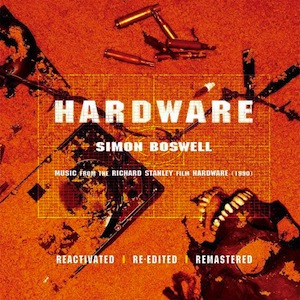 you?
you?
Simon Boswell: People have been saying to me for years, “have you got this track or that track,” or “we’d really love this soundtrack” or the other. And I found out that the rights to the HARDWARE soundtrack had reverted back to me, after all this time, so I thought, well, I’ll kill two birds with one stone! I formed my own label, which is called Flick Records. I still have all the DAT tapes, the original digital stereo mixes of pretty much everything I’ve ever done, except maybe the first two or three movies, which was before DAT machines had come out. I went through and I found I still had all the DAT tapes of all the different mixes and everything I had done for HARDWARE – there was enough material to make a double album, which I would release myself in both vinyl and CD. One side has the original album tracks featuring the dialogue with Iggy Pop and [Motorhead frontman] Lemmy and the people who are in the film, and the other side is all score and alternative versions, that type of thing. So many people have asked me for it over the years I’m very pleased to have been able to do it myself.
Q: What kind of overall reaction have you been getting from it?
Simon Boswell: Oh, fantastic, really, really great. Almost more than any other score that I’ve done it seems to have a very broad appeal. I think because it’s crossed over into the rock world, you know, and there’s a lot of screaming guitars on it. I guess it works on a rock level and it works on an over-the-top synth level as well.
Q: Will Flick Records being doing some additional releases of your work in the future?
Simon Boswell: Well, yeah, I’ve got a bit behind in doing it, but I have now completed a definitive version of DUST DEVIL, and I am wondering whether to do a definitive SANTA SANGRE as 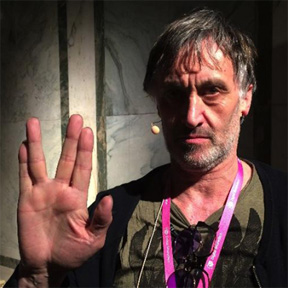 well, because I’ve discovered all of the recordings from the actual film set of all the circus music and all that stuff. So I may – it’s a simple answer. It’s a lot of work being a record company, so I’m slightly apprehensive about it. It’s not like it’s a huge market, let’s face it, but I think I will probably get to DUST DEVIL next.
well, because I’ve discovered all of the recordings from the actual film set of all the circus music and all that stuff. So I may – it’s a simple answer. It’s a lot of work being a record company, so I’m slightly apprehensive about it. It’s not like it’s a huge market, let’s face it, but I think I will probably get to DUST DEVIL next.
Q: You’ve mentioned on Facebook that you’ve discovered large segments of your score for Michele Soavi’s STAGEFRIGHT used sans permission in Joe D’Amato’s GHOSTHOUSE and ELEVEN DAYS ELEVEN NIGHTS (at least on home video editions). The re-use of existing scores seems to have plagued composers throughout the ‘70s and ‘80s, in Europe as well as Asia. What did you think when you discovered this and is there anything that can be done about it?
Simon Boswell: Initially your reaction is “Oh! My God! They’ve use this without asking!” But the bottom line is that I thought, what’s the point in getting legal about this? In some sense I was quite flattered by it, and in the end I thought, well, good luck to them. What’s the point? I’m not that motivated by legal shit or by money to go after people. I kind of think, hey, they paid me once for it, it is the same company. If it were strangers I think I might have a slightly different attitude to it, but I’m okay with it. I don’t want to encourage people to do that with all my music, of course, but this was in the wild west of the Italian film industry in the 1980s.
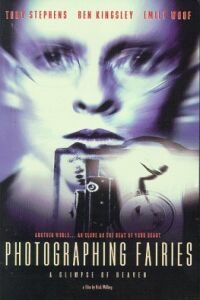 Q: You’ve scored several films for director Nick Willing, including TIN MAN which we discussed last time. I believe the first feature film you composed for him was the 1997 film PHOTOGRAPHING FAIRIES. What was your musical approach to this film?
Q: You’ve scored several films for director Nick Willing, including TIN MAN which we discussed last time. I believe the first feature film you composed for him was the 1997 film PHOTOGRAPHING FAIRIES. What was your musical approach to this film?
Simon Boswell: PHOTOGRAPHINGF FAIRIES has also become one of my most-requested scores. It’s a fully orchestral score which I did with the London Philharmonia here in London, but, for me, it’s also very ambitious, esoteric, avant-garde orchestral music. There were two fairy movies that came out the same year, one an American one called FAIRY TALE: A TRUE STORY, and then Nick’s one, PHOTOGRAPHIC FAIRIES, which was more psychedelic and much more interesting, really. These two movies are about the same thing, these two young sisters who claim to have discovered fairies in the forest near where they live in England, but in Nick’s case, it’s a very dark film in which these young girls are eating flowers they’ve found in a trunk of a tree, which turn out to be hallucinogenic flowers; when eaten, they slow your metabolism down so you can see these fairies, who normally travel incredibly fast. This World War I photographer, whose whole passion and interest is in early cameras, has figured this out and sets about photographing fairies by taking the psychedelic drug himself! It’s quite out there, but it’s a really good film, actually, and I’m very pleased with the score. I think I may release that one myself soon, too, because I own all the rights to that. We had a deal, actually, with Varese Sarabande, which was going to release it, but then the movie had a disastrous screening in America and it never got a general release so the whole thing kind of went away.
Q: Your grand, symphonic score for Nick’s miniseries remake of JASON AND THE ARGONAUTS followed in 2000. What was your musical palette for this film and  what element(s) of the film were you (or Nick) especially keen on focusing your music on?
what element(s) of the film were you (or Nick) especially keen on focusing your music on?
Simon Boswell: The first thing that I didn’t do was go and watch the original with Bernard Herrmann’s score, because I really did not want to be intimidated by that! So I stayed as far away from that as I could. But it’s clear what it’s supposed to be – it’s epic, it’s got a real big kind of epic feel to it, and it’s a lot of adventure and a lot of fantasy and exotic imagery. I think the effects aren’t everything they should be when you watch the TV series; it’s not really Nick’s fault, but budgetary stuff. I did what I always do, really, I’m not that tied down to the actual physical arena of where these things are taking place. It doesn’t sound Greek, you know! I was trying to compose music that sounds epic and that creates its own universe, with some of the big brass and big string stuff. I’m particularly fond of the main theme, which also becomes the love theme; it’s heroic but also quite sad as well, and it has a lot of yearning in it, perhaps reflecting a quest to be achieved…
Q: In a film like this, and in Nick’s TIN MAN and PHOTOGRAPHING FAIRIES do you feel that music has an added responsibility to help the audience suspend their disbelief to make the fantasy world especially credible to an audience?
Simon Boswell: After a certain amount of years doing this, I’ve talked a lot about what the music can and can’t do and I have had an aversion during my career of giving people the same information twice, or conveying something in the music that they already know. When I was doing SANTA SANGRE with Jodorowsky, when that scene came up with the wife of the knife-thrower getting her arms cut off and there’s blood spurting everywhere, I said to Alejandro, do you want me to make this a kind of nasty, unpleasant piece of music, and he said, “No, no no! This must be uplifting, this must be wonderful, it must be heavenly, like she’s achieved everything she ever wanted in her life and in her spirit world.” So I learned very on that you don’t have to do the obvious thing. In some modern films there’s this sort of paranoia or fear that the audience won’t understand things, but my feeling is if you see a car chase is going on, you don’t necessarily have to give them car-chasy music, giving people the same information they already have,. If you can write something that perhaps asks people question what they’re watching, then you actually engage the audience much further, you make them curious about the film; it’s like “this doesn’t quite go? This isn’t exactly what I’m watching, the music’s trying to tell me something, but what is it?” So I think it makes people more curious about the film they’re watching.
But as we go with fantasy and adventure stuff, you have more of what I would call a popcorn duty to transport the audience to a higher plane, as it were, to make the music seem as of another world, or of the world that you’re watching. You’re allowed in those kinds of films to give it a broad sweep, so that’s slightly different from what I was talking about. Action movies for me are the hardest things or the least satisfying to write music for, because you are essentially being asked to describe in music exactly what they’re going to be watching, unless you’re working with a smart director who might want to put a really ambient, slow piece of music over a very fast car chase, because he’s trying to actually say something different or maybe question more about the character who’s involved in it. I think that makes a little sense. But I’m just not keen on doing what you already know.
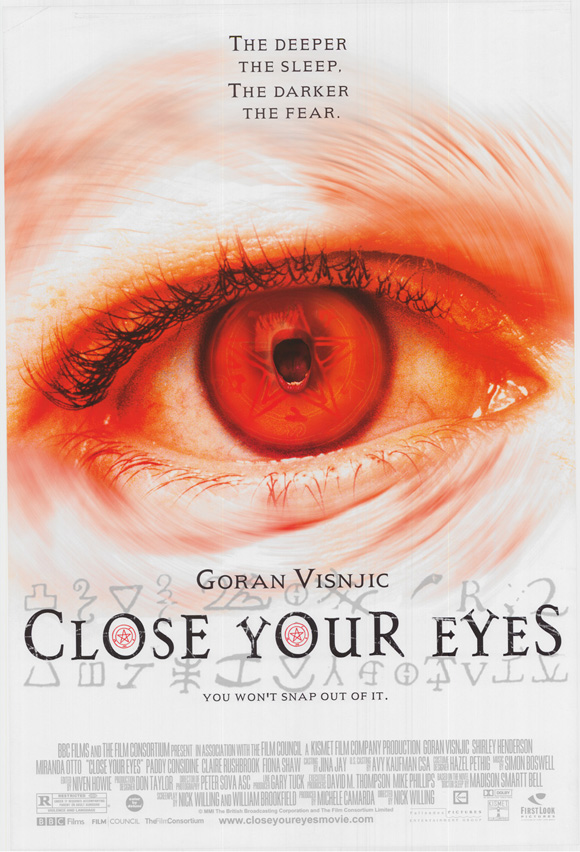 Q: You also scored Nick Willing’s horror thriller DOCTOR SLEEP (aka CLOSE YOUR EYES). What were your experiences on this film and how did you use your music to maintain a prolonged creep factor throughout this film?
Q: You also scored Nick Willing’s horror thriller DOCTOR SLEEP (aka CLOSE YOUR EYES). What were your experiences on this film and how did you use your music to maintain a prolonged creep factor throughout this film?
Simon Boswell: This was a mixture of electronica and some orchestral. It was a pretty creepy film – there are some very nasty scenes in it, actually. But I wanted there to be a sense of otherworldliness about it that was not entirely terrifying; it’s slightly seductive in a kind of way, and I feel I achieved that better with the electronic component than I did with the orchestral stuff. CLOSE YOUR EYES is a very odd film, really; about a hypnotist who specializes in helping people give up smoking! But it’s really about hypnosis and this cult which is obviously stealing people’s souls. It’s quite creepy, actually. But I’ve done so many creepy films it’s very hard for me to answer in detail, because it’s sort of a second nature for me to do creepy stuff!
Q: You also released an album of the same name which was very interesting. The very first release on the Flick label.
Simon Boswell: Yeah – that has confused the hell out of people, because most people are expecting the score from the film! It hasn’t really gotten out there or had a proper release. I might put it out on vinyl and rerelease the thing, because it’s such a weird mixture. I basically took 25 years of my film scores, added six or eight healthy new pieces, and got some of the directors as you know on that album, Dario Argento’s doing a voice, and Jodorowsky, Ewan McGregor and Ray Winston. It’s an album I’m very proud of, I just think it’s confused people that the album is called “Close Your Eyes,” that it’s not actually the score to the movie of the same name.
Q: What was your approach to scoring Willing’s haunting mystery thriller, THE RIVER KING (2005), and how close to you work with Nick on a film like this to determine what he wants?
Simon Boswell: Nick always pretty much leaves me to do what I need to do and what I want to do. This was a good example. I’m very pleased with the score to THE RIVER KING, I think it still sounds quite fresh. Again, it’s a mixture of electronic and ambient sounds, and weird, very moody strings. I remember I really wanted to have a sound of violas predominant over violins, for a change – I got the love of all the viola players in London for doing that! They always feel like theirs are second best in the orchestral scenario, and I had far more viola players than I did violin players because I wanted that really earthy sound. It’s darker, it’s lower, so I wrote the orchestral parts very much for violas and cellos in that film. It’s set in the backwoods of Canada. I did a kind of ethnically local atmosphere with the main theme, which is played on two harps, a mandolin, a banjo, two guitars, all plucked stringed instruments. In the back of my mind it was some sort of Aaron Copland orchestral folk music, but I’m really with the way that combines with the electronic stuff. It’s probably most successfully of all the films I’ve done with electronic and orchestral parts.
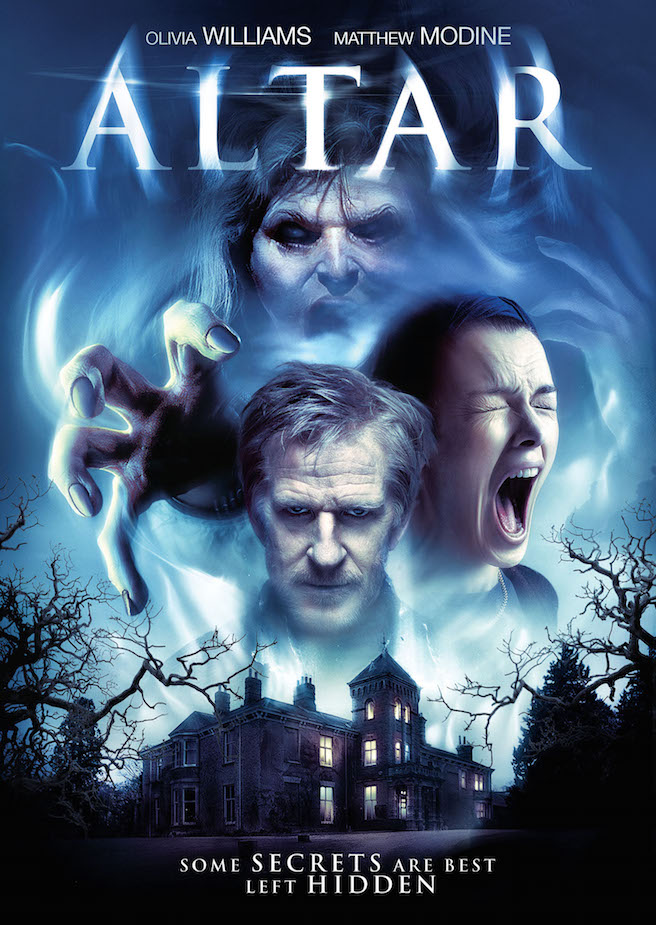 Q: Your most recent film for Nick Willing was the straight-ahead haunted house horror film, ALTAR (2014). How did you work with Nick on this film to create tension and drama as this story develops and resolves?
Q: Your most recent film for Nick Willing was the straight-ahead haunted house horror film, ALTAR (2014). How did you work with Nick on this film to create tension and drama as this story develops and resolves?
Simon Boswell: It was real challenge, because the editor had temped the film with all kinds of things from all over the place, just wall to wall, a huge amount of music. There was no budget for using a real orchestra, so, as happens when you don’t have enough money to use live players, it was all achieved with samples. It was lot of work. That was one of three movies I did last year, and actually I’m proud of that one as well. It’s a creepy film, quite a chilling ghost story.
Q: Then there’s a sci-fi thriller with elements of comedy called FLYTRAP which you did for Stephen Brooks this year…
Simon Boswell: Stephen asked me just to supply him with one theme. He was very fixated on a piece I’d written for another movie, and I decided to just write something very similar for him, without actually getting involved in scoring the film as such. I sent him over a recording of the piece as well as various breakdowns of it, a solo piece, the strings from it, and a few different variations and let him get on with it. I think he’s a very talented filmmaker. We met through a friend of a friend in L.A. I gave him what he needed to use and he put it where he thought it should go, unlike most movies which I score directly to picture.
Q: What were your musical challenges in scoring the horror thriller THE LAST WORD, for Simon Rumley?
Simon Boswell: It’s had an interesting genesis in that it’s produced by Frank Mancuso Jr., who produced all the FRIDAY THE 13TH movies and many others. They got Simon to direct it and to work on the script. I think there’s been some disagreement along the way as to what it should be, which it why it’s taken such a long time, and it’s still not out. Simon eventually took the project back to England and re-cut the movie himself, I think very successfully, and I’ve been working with him to adjust and tweak the score that I originally wrote over eighteen months ago now. They are actually this week doing the final version of the film, and then we shall see what happens to it. But I think it’s in its most effective form right now. It’s based on a true story of a young lad who has mental problems but who is arrested, tried, found guilty and executed for a murder he didn’t do, after which almost everyone involved in the prosecution and trial of this kid (I think he was only 18 when he was executed) died shortly after. It’s kind of like a beyond-the-grave type of thing.
 Q: Another one with a revenge kind of pattern is BOUND TO VENGEANCE, which was formerly called REVERSAL. What was your
Q: Another one with a revenge kind of pattern is BOUND TO VENGEANCE, which was formerly called REVERSAL. What was your
musical palette here and how did that enable you to focus on the main female character to sympathize with her wide range of emotions over the arc of her story – while also conveying sufficient musical tension and horror throughout the picture?
Simon Boswell: It’s a very good, visceral movie, a rather nasty female revenge movie. I decided to make it just seriously distorted. It’s got some of the most distorted music I’ve ever written, electronic and distorted guitars but also some moments of reflection with a quiet, sad, piano theme. It’s about people trafficking and girls being abducted and used through a whole sort of network, probably set in L.A. But it’s made by a very talented Mexican director; there are a whole bunch of Mexican origin who live and work in L.A. at that little production company, and I met them at the Morbido festival in Mexico [Oct 28-Nov 1, 2015], which is the best horror genre festival in the world, if you ever get a chance! I’m going to go and play there in two or three weeks with my band [click here for details]. That film, it’s good, it’s made on a shoestring but very stylishly done.
Q: Speaking of your band, I wanted to ask what you’re doing with the band, The And, and what you’ve got coming up with your shows?
Simon Boswell: For years I’ve been trying to figure out how to do some of my film music live. People who know my career will know that I don’t have the kind of major credits that mean I can go and do a concert in Carnegie Hall like LORD OF THE RINGS, for example. But I’ve been trying to work out a way to get my more culty movies, the stuff which is popular in small pockets of die-hard fans and different kinds of fans, out into the live environment. It’s taken me a long time to get round to it, but I somehow decided to not try and make this like a big band thing or an orchestral thing but to make it more like a psychedelic band from the late ‘60s/early ‘70s. I’ve given it that spin. There’s still a very big
filmic element to it, but there’s a lot of, I think, psychedelic guitar stuff on it, because I enjoy playing that myself, so it starts from the basis of a lot of these things and then goes off into a lot of different areas. We also have a big visual component to it. We have an Austrian visual artist called David Sagberg, who is normally with us live on gigs, but this time he is pre-preparing the show, with the same effects. We thought we’d take some of the iconic images from the movies and make it more like it was if you were watching a band – it’s certainly not that you’d be watching a move with a live score. It’s not that at all – there is no connectivity between the clips, it’s very much a kind of visually interpretive version of what we’re playing. And I’m going to do everything from the very early Italian stuff, songs and score from PHENOMENA, STAGE FRIGHT, to SANTA SANGRE, then HARDWARE and DUST DEVIL, LORD OF ILLUSIONS, SHALLOW GRAVE, it goes right through from some of the orchestral stuff, which I use from samples of those things, to the electronic stuff that was beginning to come with SHALLOW GRAVE and after. So it works really well. We’re off to Romania in two days’ time at the Dracula Film Festival in Transylvania, and we’re off to Mexico for Morbido festival for Day of the Dead at the end of October.
Q: Will you be filming any of these performances?
Simon Boswell: I hope so. I haven’t organized it myself but I’m hoping there will be films of these. I’m sure you’ve seen there are clips of us playing on YouTube that you can see if you go on my channel. But we haven’t done the definitive film version yet.
Q: I understand you want to make an announcement about another project you have that’s about to be released.
Simon Boswell: Yes. The other thing that I’ve been working on with various other people and which we’re just about to release, is our own app. It’s inspired by the 20th Anniversary of the movie HACKERS [1995], which has become a real cult for people, especially in America, who have been influenced by this kind of cyber fashion thing that was in the film when it came out. At the time people hated the movie, but it’s proved to be rather prophetic, actually, and enjoying a huge revival everywhere. The soundtrack isn’t just my score, it also features Underworld, Prodigy, Orbital, all of the very kind of EDM (Electric Dark Music) bands. The app that we’re doing is based on the technology from HACKERS where you track inside computers. It’s very trippy and psychedelic. I reworked a track that I made with Timothy Leary, the ‘60s acid guru, when I was in L.A. I made a track with him and an Italian author/musician/physicist Fiorel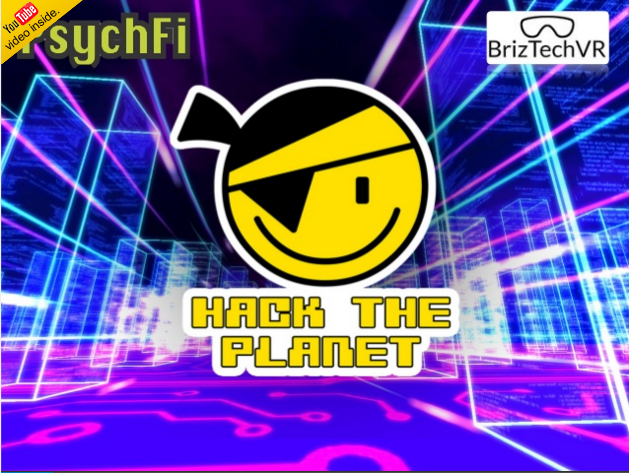 la Terenzi, who had sampled sounds of galactic spirals from outer space and had made this sort of spacey dance track. Timothy, at this point (it was shortly before he died), he decided that space was like the new drug. You didn’t need acid any more, you took a trip into space, you took a trip into yourself, it’s all the same thing. So the app is going to be out on Android and I-phone I think end of October, and it’s free. It comes out with a track called “Hack the Planet,” which I’ve written with a grungy, low-fi electronic band called Revenge of Calculon. That’s the main track on the app – but we’re trying to encourage people to write their own soundtrack as well. We’re also going to make the Timothy Leary track available to download with the app too. We’re doing this, by the way, with Google Cardboard, where you put your smartphone in this cardboard viewer. Google has supplied them and we’re going to be selling them, it’s going to be $10 or something. The app is free, the music is free. You download the app, you buy the cardboard, you put your phone in it, you can then enter a whole 360° environment, which you can turn around, like you can with a Oculus Rift virtual reality headset. It’s like going on your own trip into your computer. It will launch in London at ComicCon at the end of October. I’ll be in Mexico then so they’ll have to launch it without me being there, but that’s the way it is. So watch this space – that’s all I will say!
la Terenzi, who had sampled sounds of galactic spirals from outer space and had made this sort of spacey dance track. Timothy, at this point (it was shortly before he died), he decided that space was like the new drug. You didn’t need acid any more, you took a trip into space, you took a trip into yourself, it’s all the same thing. So the app is going to be out on Android and I-phone I think end of October, and it’s free. It comes out with a track called “Hack the Planet,” which I’ve written with a grungy, low-fi electronic band called Revenge of Calculon. That’s the main track on the app – but we’re trying to encourage people to write their own soundtrack as well. We’re also going to make the Timothy Leary track available to download with the app too. We’re doing this, by the way, with Google Cardboard, where you put your smartphone in this cardboard viewer. Google has supplied them and we’re going to be selling them, it’s going to be $10 or something. The app is free, the music is free. You download the app, you buy the cardboard, you put your phone in it, you can then enter a whole 360° environment, which you can turn around, like you can with a Oculus Rift virtual reality headset. It’s like going on your own trip into your computer. It will launch in London at ComicCon at the end of October. I’ll be in Mexico then so they’ll have to launch it without me being there, but that’s the way it is. So watch this space – that’s all I will say!
For details on Simon’s app, see the web page here.

